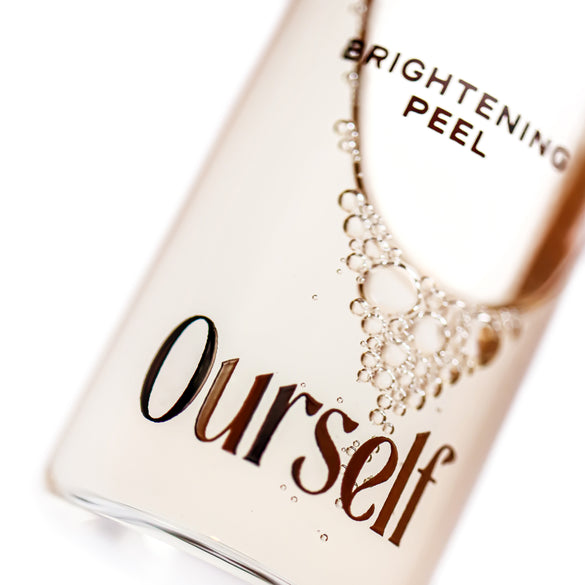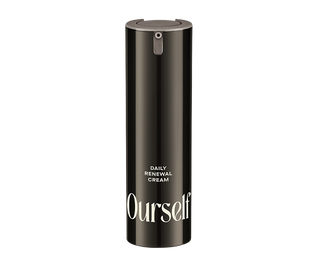
What exactly is a chemical peel? Here, how to get the maximum benefits from your at-home treatments.
Chemical peels are gamechangers when it comes to a highly efficacious, non-surgical treatment that creates a significant improvement in your skin. Here, your everything-guide to how to leverage an at-home peel to get maximum impact.
In simple terms, chemical peels are a method of deep exfoliation using specific acids in order to remove superficial layers of the dermis to reveal radiant, glowing, more even-toned skin. They’ve been in existence for a long time (in different variations since the mid-1800s), but peels have typically been the domain of the pros, requiring a visit to the clinic for those looking to partake, which can be a serious barrier to entry.
What are the benefits of a chemical peel?
Peels truly stand in a class of their own when it comes to erasing visible signs of UV damage, hyperpigmentation, acne marks, and aging by improving the look of lines and wrinkles to evening out skin tone and texture. Today, the idea that one has to go in-office for truly clinical-level results has expired. The Ourself Brightening Peel have been formulated by biotech scientists and developed with and tested by doctors for maximum efficacy, yet is gentle enough to use at home. It boasts clinical levels of actives—34% glycolic acid in the Brightening Peel—to erase uneven pigmentation, minus the visit to your derm’s office. Eager to try them for yourself? Read about one Ourself product tester’s experience with Brightening Peel here. Keep in mind, our chemical peels are easy to self-administer, but they are potent and require a bit of prep before you get going. Here’s what you should know.
How to prepare for your chemical peel?
Discontinue the use of hair removal products and actives such as retinol in the two weeks leading up to your peel. Chemical peels contain very high levels of active ingredients and are not meant to be mixed with skincare products containing retinoids and other acids like AHAs/BHAs. Likewise, waxing and laser hair removal can leave the skin sensitized and irritated, creating a less-than-ideal canvas for your chemical peel and encouraging irritation. For the two weeks leading up to your peel, it is ideal to apply Daily Dark Spot Intercept followed by Daily Renewal Cream, plus Mineral Sunscreen SPF 50 every morning and evening (You can obviously skip the SPF at night, but pro tip: when outdoors, reapply Mineral Sunscreen SPF 50 every 2-3 hours.) Why? Daily Dark Spot Intercept, Daily Renewal Cream, and Mineral Sunscreen SPF 50 are specifically formulated to prime and protect your skin prior to a chemical peel, working to gently begin the process of lifting pigmentation, nourishing your skin, and protecting against further UV damage. In fact, our in-house medical advisors, Dr. Eva O’Brien-Simmons and Dr. Diane Orlinsky tested this protocol on their diverse group of patients and found that prepping the skin with this regimen resulted in the most beneficial results when it came time to administer the peels.
What to do on the day of your chemical peel?
Prep properly and read the instructions. Every Ourself peel comes with its own Accessory Kit, which contains everything you need to prep your skin and ensure safe product handling and application, along with highly-detailed instructions that break down each and every step. It’s critical to read through the instructions before beginning your peel to ensure the best possible results.
How to take care of your skin post-chemical peel?
Apply both Daily Dark Spot Intercept and Daily Renewal Cream to the entire face starting the evening immediately following the Brightening Peel treatment, to fully protect and nourish your skin. Continue applying both products daily, AM and PM, as skin heals. Don’t forget to keep your skin moisturized. You might experience dryness, flaking, or peeling in the days following your treatment. (Don’t worry, this is a good thing as it means your dermis has dulling, dead skin cells to spare.) By applying Daily Renewal Cream as needed, you’ll be able to minimize dryness and redness. If the treated area feels itchy, dry or tight, reapply moisturizer—do not scratch. Additionally, make SPF your very best friend. It’s so crucial to use Mineral Sunscreen in the daytime to protect skin and encourage optimal results. Avoid sun exposure, as it can delay and degrade the quality of your results.
How soon after a peel can I use acids and/or retinoids?
Wait 3-4 weeks after performing the peel, or until there is no peeling or signs of irritation present, to incorporate retinoids and acids back into your routine. We suggest you add one product at a time, and go slow—give it a few days before adding the next one. Peels this efficacious require a bit of homework, but the results are well worth it. In fact, because chemical peels are so good at their job, there can be a temptation to opt for the “more is more” approach but we assure you that your skin will be the happiest it’s ever been if you use peels as a periodic boost to your skincare routine rather than overdoing it. Trust, a little goes a long way, and you’ll see serious positive changes in your skin.

